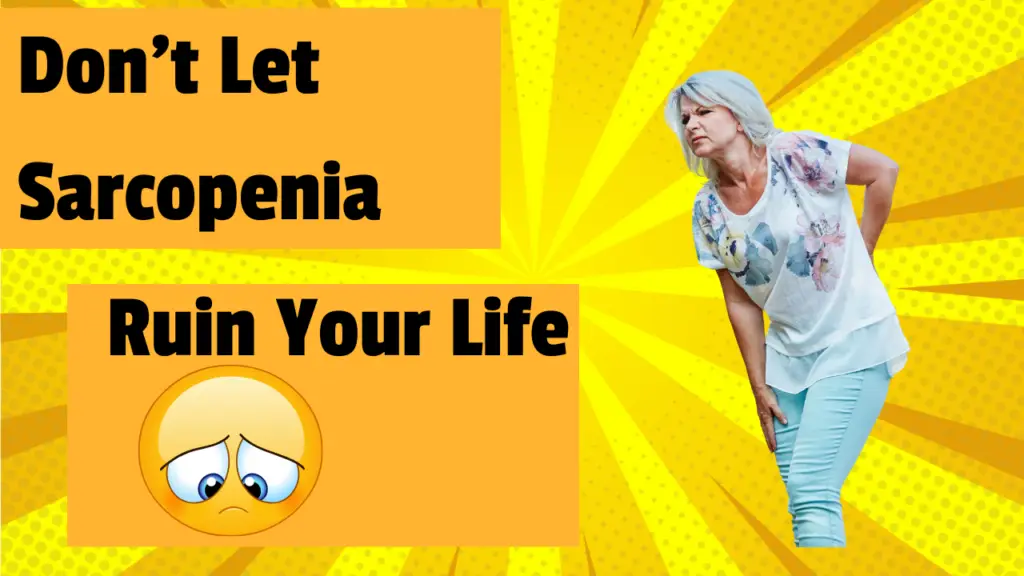Sarcopenia doesn’t just happen overnight. It’s a progressive condition that weakens your muscles, damages your posture, and erodes your ability to move and live freely. While most people associate sarcopenia with aging, research shows it can begin as early as your 30s. And despite common advice, lifting weights, eating more protein, or taking hormone supplements won’t be enough to stop it.
So what’s the missing link? A holistic, fascia-based approach that addresses your body’s structure, balance, and communication systems — not just the muscles themselves.
Click on the image to watch the full video

Click on the image to watch the video
What Is Sarcopenia, Really?
Sarcopenia is the gradual loss of muscle mass and neuromuscular connection. It leads to weakness, fatigue, poor balance, difficulty with stairs, and decreased mobility. Contributing factors can include:
- Inactivity or lack of intentional movement
- Hormonal imbalance
- Ineffective protein synthesis
- Inadequate nutrition
Most people respond with a linear strategy: eat more, move more, and take supplements. But the body doesn’t operate in straight lines — it’s a web of interdependent systems. If you don’t address your structure and internal communication, even the best supplements won’t get absorbed properly. That’s where a holistic model comes in.
The Fascia-Based Framework That Changes Everything
To build real strength and protect against sarcopenia, you need to train your fascia — the connective tissue network that holds your muscles and skeleton in place. Your muscles don’t operate alone. They rely on:
- Contractile fibers (your muscle tissue)
- Series and parallel elastic components (your fascia, ligaments, and periosteum)
This system is described in Hill’s Muscle Model and supported by osteopathic principles. When fascia is stiff, unbalanced, or misaligned, your muscles lose their efficiency — no matter how hard you train.
Balance Your Structure Before You Build Strength
Structure dictates function. If your posture is collapsing, your digestion, hormone production, and movement all suffer. That’s why people with sarcopenia often show signs like:
- Kyphotic (hunched) posture
- Decreased height
- Poor digestion or hormonal imbalance
- Limited strength despite working out
Building strength on top of dysfunction won’t work. You must first correct your structure through fascia-based methods — which brings us to the two most powerful tools for long-term change.
Myofascial Stretching and ELDOA: Your Secret Weapons
✅ Myofascial Stretching realigns your tensegrity structure — the interconnected web that holds your body together. It creates space and balance through precise tension in the fascia.
✅ ELDOA strengthens and decompresses your spine, restoring efficient communication between your brain and body. A healthy spine boosts hormonal signals and neuromuscular coordination — exactly what sarcopenia disrupts.
Together, these tools form the foundation of a fascia-centered program that not only restores strength but builds it intelligently, sustainably, and holistically.
Train the Whole Chain, Not Just the Muscle
Muscles have multiple fiber directions. For example, your glutes have anterior, middle, and posterior fibers — each needing a different position and movement pattern to train effectively.
By using fascia-informed postures and loading the full myofascial chain (not just isolated muscles), you teach your body to move better, not just harder.
Go Beyond 10 Reps — Challenge the System
To reverse sarcopenia, you must go beyond your comfort zone — not recklessly, but with purpose. That means pushing past 10 reps when appropriate, training to near-exhaustion in a safe way, and challenging your nervous system to adapt and grow.
This stimulates the exact responses you want:
- Muscle growth (even without heavy weights)
- Improved neuromuscular coordination
- Greater hormonal efficiency
- More connection, awareness, and control
Start Where You Are, Then Build Up
Yes, this may sound complex — fascia, hormones, structural balance, different muscle fibers — but it all starts in one place: where you are right now.
Find the tightest, weakest, or most disconnected part of your body and begin there. With the right strategy, your body will adapt faster than you expect. Overwhelm fades as progress builds. And each step unlocks a little more strength, confidence, and freedom from the grip of sarcopenia.
Want Help? I’ve Got You.
✅ Free Ebook – 4 Steps to Live the Life of Your Choosing: Get Stronger, More Mobile & Pain-Free.
✅ Book a Call – If you’re ready for a deeper transformation, I’ll assess where you are and where you want to go — and we’ll see if my program is a fit.
Building a foundation for a better life.
Find out more @

Leave a Reply